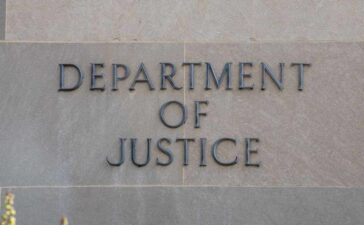As we enter the year 2025, the crypto market eagerly awaits a regulatory overhaul, with the US ready for a whole new approach to digital assets.
The inauguration of President-elect Donald Trump, along with key leadership changes at the Securities and Exchange Commission (SEC), will potentially see a shift towards a more crypto-innovative environment.
Besides this, new concepts in taxation, stablecoins, and international standardization, among others, could ensure certainty in the regulatory landscape.
DEMOCRATS, REPUBLICANS AND TRUMP WILL WORK TOGETHER TO PASS CRYPTO LEGISLATION IN EARLY 2025
Institutions are closely watching the Digital Asset Market Infrastructure Bill (FIT21) and the Stablecoin Bill, both of which are expected to pass shortly after January 3rd, the day… pic.twitter.com/f7bfB6HsCa
— SMQKE (@SMQKEDQG) December 18, 2024
EXPLORE: Chris Larsen of Ripple Donates Another $10M in XRP to Kamala Harris’ Presidential Campaign
Strategic Bitcoin Reserve
Trump’s announcement of a proposal to create a Bitcoin strategic reserve sent Bitcoin soaring above $106,000. The concept, which is similar to the strategic oil reserve, will essentially establish Bitcoin as a critical asset in the nation’s financial strategy.
However, Trump has not clarified if the government would further acquire bitcoin on the open market, thus adding to the stockpile.
In order to do so, the government might have to borrow money. However, some proponents of a bitcoin reserve argue that the US could trade some of its gold reserves and purchase bitcoins instead.
US Anticipates Following Changes Under Trump’s Administration
The return of Trump to the White House has sparked optimism within the crypto industry. His appointment of Paul Atkins, a noted cryptocurrency advocate, as SEC Chair is seen as a harbinger of change.
A Pro-Crypto Stance at the SEC
Atkins has been relentless in advocating for such a regulatory outlook and said that there should be cooperation and understanding with crypto firms that ended up having many lawsuits because clear instructions were not provided.
He is expected to move away from “regulation by enforcement,” a hallmark of Gary Gensler’s tenure.
Legislation in Focus
The Financial Innovation and Technology for the 21st Century Act (FIT21), which aims to streamline the definition and specification of each token and provide a framework for all other digital assets, might also gain traction under Atkins’ leadership.
This bill, currently in the Senate, could potentially redefine how cryptocurrencies are regulated.
Ripple Effects From Past SEC Actions
The case involving Ripple Labs has brought to the forefront the aggressiveness of the SEC and its approach, as led by Gensler. However, with recent indications that the SEC’s authority would not extend to certain token sales, the crypto community has been more encouraged.
Atkins’ tenure is likely to revisit such enforcement priorities, emphasizing education and fraud prevention instead.
EXPLORE: 15 Best Anonymous Bitcoin Wallets with no KYC in 2024
Key Areas of Regulatory Reform
The evolving US crypto regulatory landscape is expected to address critical areas, including stablecoins, taxation, decentralized finance (DeFi), and exchange oversight.
Stablecoin Frameworks
Stablecoins remain a pivotal element of the digital asset ecosystem. A federal regulatory framework could standardize their issuance and operation, which would boost investor confidence and mitigate systemic risks.
Lessons from global markets, such as Europe’s MiCA regulations, may inform the US approach.
Taxation Clarity
Cryptocurrency taxation remains complex, with capital gains and income taxes applied inconsistently. Proposed updates include applying the wash sale rule to crypto, limiting tax loss harvesting, and offering more precise guidelines for reporting requirements.
These changes seek to align crypto taxation with traditional financial instruments, reducing ambiguity for institutional and retail investors.
DeFi and Decentralized Platforms
As DeFi continues to gain traction, regulators are likely to explore frameworks that ensure transparency and security without stifling innovation.
Governance structures, tokenomics, and the risk of centralization in supposedly decentralized platforms are expected to come under scrutiny.
Exchanges and Custody Standards
Strengthening oversight of crypto exchanges and custody services is another priority. Enhanced standards could address concerns over security, transparency, and the risk of fraud, fostering greater trust among users.
EXPLORE: Best Copy Trading Platforms in December 2024
US Crypto Regulations: A Global Perspective
International Comparisons
While regions like Europe and Asia are already advancing their policies, the US still seeks to establish a unified regulatory framework.
The European Union’s MiCA regulations, set for full implementation by 2026, require licensing for crypto companies and stricter measures for self-hosted wallets.
Meanwhile, Asian countries like Japan and South Korea are progressing with crypto-friendly policies, while China maintains strict bans on most crypto activities.
Global Leadership Potential
The International Organization of Securities Commissions (IOSCO) has already laid emphasis on the need for global consistency in managing cross-border digital asset markets.
The US’s regulatory efforts may set international standards, particularly in areas like stablecoins and decentralized platforms.
Collaborative Challenges
The US is also facing potential hurdles in aligning with international frameworks, despite its leadership ambitions.
Diverging approaches across regions, such as India’s delayed regulatory actions or Brazil’s growing reliance on stablecoins for payments, have highlighted the complexities of achieving global cooperation.
The post What Changes To Expect In Crypto Policy? US Crypto Regulations: A 2025 Forecast appeared first on 99Bitcoins.





